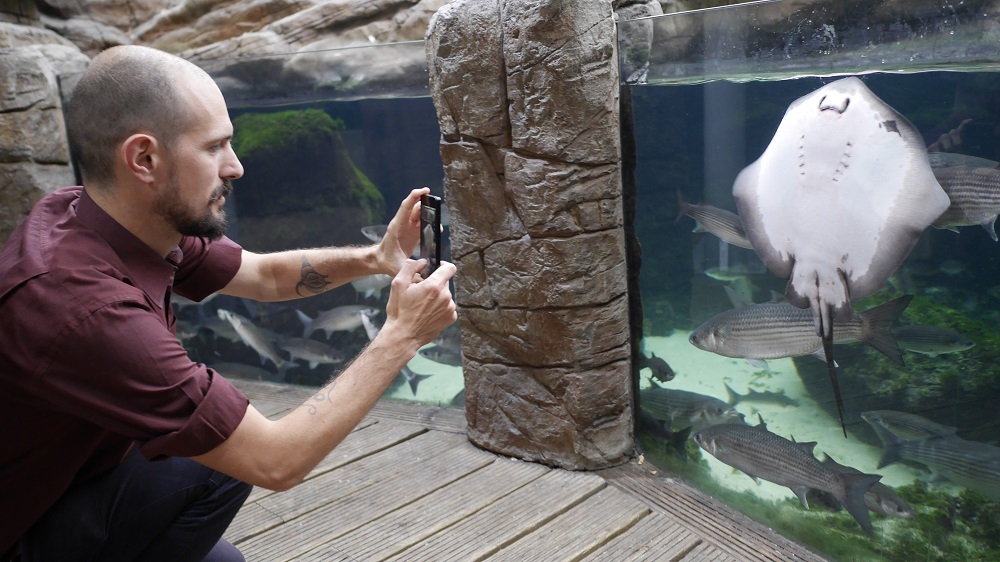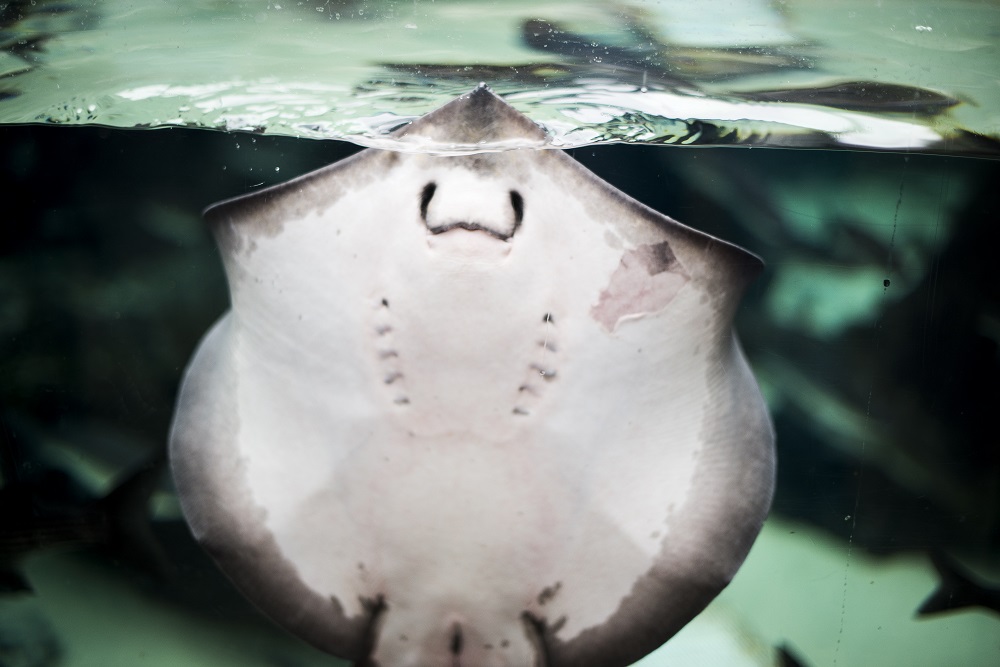
Common Stingray (Dasyatis pastinaca) can be found swimming around the coastlines of the UK, however they usually don’t come as close as the shoreline.
As with most stingrays, they are ovoviviparous which means that eggs develop and hatch internally, then when conditions are right the pup(s) will be born. Most animals around the world will either lay eggs externally or give birth without the egg stage internally for as long.
The Common Stingray has a barb on the end of its tail which it uses defensively to strike against those who mean it harm. The barb also contains venom to disable their predators.
Rays are related to sharks and share many of the same characteristics such as having a body made out of cartilage, rough skin made from dermal denticles (or ‘skin teeth’) to give them an aerodynamic advantage in the water, and gill slits to breathe.
Rays have small openings called spiracles above their eyes on top of their body which allows them to breathe if they are sitting on the sea floor.
Type
Fish
What do they eat?
Crustaceans, molluscs, worms
Size
45cm
Water Type
Cold saltwater
Where are we?
North Atlantic, UK coasts
See Us At
Rocky Shores
